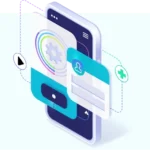Introduction
You have a brilliant design in mind. It’s the perfect logo for a company’s polo shirts, a stunning graphic for a jacket, or a custom piece for a cherished client. But between that idea and a perfectly stitched garment lies a critical, technical step: digitizing. This process of converting artwork into a language an embroidery machine understands can make or break your final product.
Doing it yourself demands significant time, specialized software, and a steep learning curve. This is where professional Custom Embroidery Digitizing Services become your secret weapon. They transform your vision into a precise stitch file, saving you hours of frustration and ensuring a pristine result. But with so many services available, how do you choose the right one? This guide cuts through the noise, comparing what truly matters to help you find a partner who delivers consistent, high-quality results.
What Truly Defines a “High-Quality” Digitizing Service?
Before we compare providers, let’s establish the universal markers of quality. When you receive a file back from a service, how can you tell it’s well-made?
Flawless Stitch Execution: The final stitch-out should be clean. Look for smooth, even satin stitches without jagged edges. Fill stitches should lay flat with consistent density and no visible gaps or thread breaks. The design should feel secure and look professional.
Intelligent Pathing and Sequencing: A skilled digitizer plans the stitch order like a chef plans a recipe. They lay down underlay stitches first to stabilize the fabric, then build the design in a logical sequence that minimizes trims and jumps. Good pathing prevents puckering and reduces the chance of thread breaks.
Fabric-Specific Expertise: A one-size-fits-all approach does not work in embroidery. A high-quality service will always ask what material you’re stitching on. They understand that a file for dense denim needs different settings than one for stretchy fleece or delicate twill. This foresight is the difference between a perfect puff and a puckered mess.
Crisp Detail and Definition: Fine lines should remain sharp, and small text should be legible. A quality digitizer knows the limits of embroidery and will advise you if a design element is too intricate to stitch well at your desired size, often suggesting smart simplifications that preserve the design’s intent.
Comparing the Contenders: A Look at Different Service Models
The “best” service often depends on your specific needs—are you a hobbyist needing one-off designs or a large shop with a constant, high-volume demand? Let’s break down the common types of providers.
The All-in-One Online Platform
These services operate through a sleek website where you upload your art, fill out a form with specifications, and receive a quote. The process is automated, straightforward, and often very fast.
-
Pros: User-friendly, transparent pricing, often the fastest turnaround for standard jobs. They are great for simple to moderately complex logos and for those who value speed and convenience.
-
Cons: You might interact with a different digitizer each time, leading to slight variations in style. Communication can be less personal, and highly complex or artistic designs may not receive the nuanced attention they require.
-
Best For: Small businesses, quick-turn projects, and those new to outsourcing who want a simple, reliable process.
The Specialized Freelance Digitizer
This is an individual expert, often found through industry referrals, forums, or platforms like Etsy. They run their own business and typically handle every aspect of the order themselves.
-
Pros: You get a direct line to the artist. This allows for deep collaboration, consistent quality, and a partner who truly understands your preferences over time. They often excel at complex, custom, and artistic designs.
-
Cons: Their capacity may be limited, and they might not offer 24/7 service. If your go-to person is on vacation or sick, your workflow can stall. Pricing can be less transparent upfront.
-
Best For: Established businesses seeking a long-term partner, projects requiring artistic interpretation, and those who value a personal relationship with their digitizer.
The Large-Scale Professional Agency
These are full-scale companies with teams of digitizers, project managers, and customer service reps. They are built to handle high volume and large, complex orders from major corporations and uniform suppliers.
-
Pros: Massive capacity, guaranteed turnaround times, and robust quality control processes. They often offer additional services like vector art conversion and management of large design libraries.
-
Cons: Typically the most expensive option. The process can feel less personal, and they may have minimum order requirements or be less interested in small, one-off projects.
-
Best For: Large embroidery shops, corporations with ongoing uniform programs, and anyone needing to digitize a large catalog of designs with enterprise-level reliability.
Your Decision Checklist: How to Make the Final Choice
With an understanding of the landscape, use this practical checklist to evaluate your options and make an informed decision.
1. Scrutinize the Portfolio.
Don’t just look—analyze. A great portfolio shows a variety of work: small text, complex logos, and different applications like hats and jackets. Zoom in on the images. Are the stitches clean? Is the coverage solid? Look for examples that mirror the type of work you do most often.
2. Understand the Pricing Structure.
Pricing is rarely simple. Most services charge by stitch count, but some have a minimum base fee. Be wary of prices that seem too good to be true; they often indicate automated, low-quality digitizing that will cost you more in ruined garments and re-dos. Look for transparent pricing that fits your budget without sacrificing quality.
3. Gauge Their Communication and Process.
The initial inquiry is a test. Do they respond promptly? Do they ask clarifying questions about fabric, size, and thread type? A service that doesn’t ask these questions is a major red flag. You want a partner who is proactive about gathering the details needed for success.
4. Test Their Revision Policy.
Even with perfect communication, a revision might be needed. A reputable service will offer at least one free round of revisions (excluding changes you request to the original art). Understand their policy before you order. A “no revisions” policy is a sign to walk away.
5. Start with a Test Project.
Before you commit to a large or important order, send them a test. Choose a design you’ve had stitched successfully before or one with known challenges. This real-world test is the most accurate way to judge their quality, turnaround time, and communication.
Building a Partnership for the Long Haul
Finding a great digitizing service is more than a transaction; it’s about building a business partnership. When you find a provider you trust, the entire workflow becomes smoother. You spend less time proofing and correcting files and more time producing beautiful embroidery.
The right service acts as an extension of your own team. They learn your preferences, understand the capabilities of your machines, and become a reliable resource you can count on. This reliability allows you to scale your business, take on more clients, and quote jobs with absolute confidence.
The investment in a high-quality digitizing service pays for itself. It reduces material waste from failed stitch-outs, saves countless hours of your time, and elevates the final product you deliver to your customers. In a competitive market, that impeccable quality becomes your signature.
Conclusion: Your Next Step to Flawless Embroidery
The search for the best embroidery digitizing service ends with a clear understanding of your own needs and a careful evaluation of what each provider truly offers. There is no single “best” service for everyone, but there is a perfect partner for you.
By prioritizing quality markers like stitch integrity and fabric expertise, and by using our practical checklist to vet providers, you can move forward with confidence. Stop spending your valuable time on the technical complexities of digitizing. Invest in a professional service that allows you to focus on what you do best: running a successful embroidery business and delighting your customers with impeccable, stitched-out designs. Take the first step today by reaching out to a potential partner with a test project—your future self will thank you for it.


